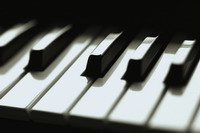Piano Sheets > Harry Akst Sheet Music > Baby Face (ver. 1) Piano Sheet
Baby Face (ver. 1) by Harry Akst - Piano Sheets and Free Sheet Music

About the Song
Baby Face is popular song. The music was written by Harry Akst, the lyrics by Benny Davis. The song was published in 1926.
"Baby Face" was covered by many recording artists of the time (and since then), including Al Jolson and The Revelers.
As a "Jazz Age" song, it was included in the soundtrack of the musical film, Thoroughly Modern Millie (1967). Harry Akst (August 15, 1894 – March 31, 1963) was an American songwriter who started out his career as a pianist in vaudeville accompanying singers such as Nora Bayes, Frank Fay and Al Jolson.
In 1916, he enlisted in the army and met Irving Berlin (in 1921 they would write "Home Again Blues"). His most notable success came with the song he wrote in 1925 with Sam M. Lewis and Joe Young: "Dinah". It would go on to multiple hit recordings by the likes of Bing Crosby, The Mills Brothers, Louis Armstrong, and Fats Waller.
Akst worked on the.
Download this sheet!
About the Artist

Random article
The joy of reading piano notes Music is said to be the best medicine developed by nature. The thought and feel is said to have the power to bring back the dead. While playing music gives you the joy you just cannot contain, same is the case with reading piano music sheets. After all, it is sheet music which tells you exactly how to play that favorite tune of yours.
Many feel that reading piano music sheets is an ardent task. Well, this is exactly where are all wrong. It is certainly not the case that one glance and you will understand what is written in that sheet music. But it is certainly not as difficult as expected! Sheet Music is the language of expressing music in a readable form. And just like to learn a new language you need dedication and perseverance, same is the case with (More...)
